Cam Terry, an urban farmer in Roanoke, Virginia, leaned back in his chair and took a long, much-deserved sip of iced coffee. After spending the morning traversing the marble hallways of the Capitol—and getting several miles of steps in the process—we had found a moment to recover our strength. “This is harder than farming!” Terry joked.
It’s Farm Bill season in Washington, DC. Since 1933, Congress has passed an omnibus bill every five years that covers everything from food stamps, conservation regulations, and even credit programs.
This year, I joined Agrarian Commons farmers Cam Terry, Duron Chavis, and Tyrone Cherry III for National Family Farm Coalition’s (NFFC) first national fly-in in three years. A progressive policy organization committed to fighting corporate control of agriculture, NFFC gathered farmers, fisherfolk, and nonprofit leaders to lobby their congressional representatives. Our shared objective was to create a more equitable farm system for all.
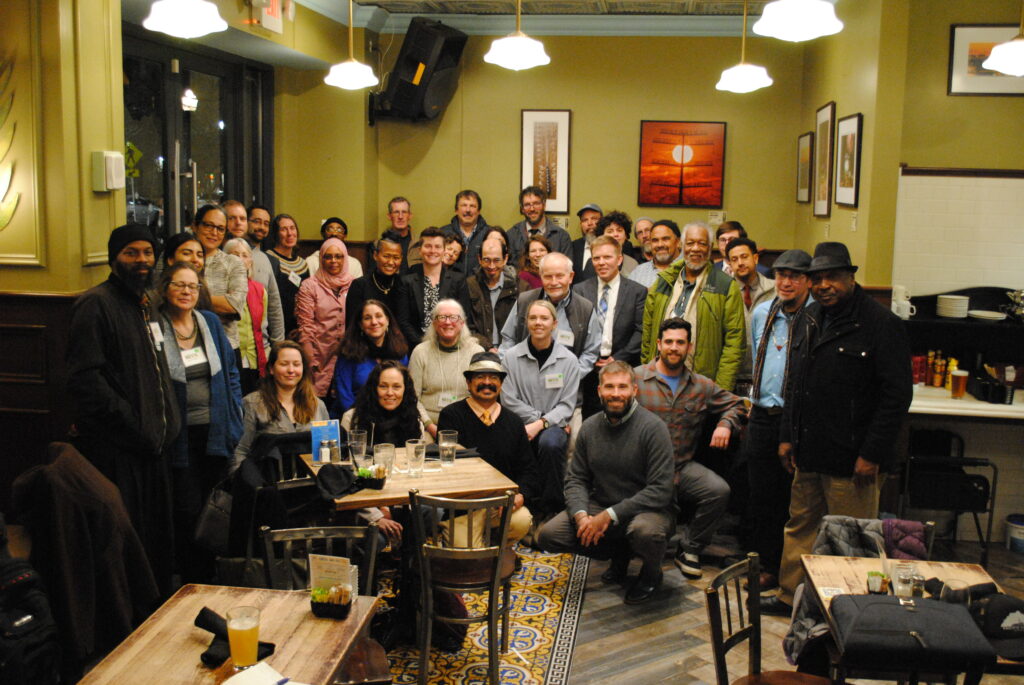
For Chavis, Terry, and Cherry, who operate farms located on land held by community-led Agrarian Commons, the top priority was to address the ongoing land loss faced by Black farmers, through expanding federal support for community land-ownership models, as exemplified by the Agrarian Commons.
“What I’m doing here is waving my flag and saying, ‘hey, the Agrarian Commons model works, we’re making it work, and we deserve the attention of the federal government to get funding to support these ideas,’” said Terry.
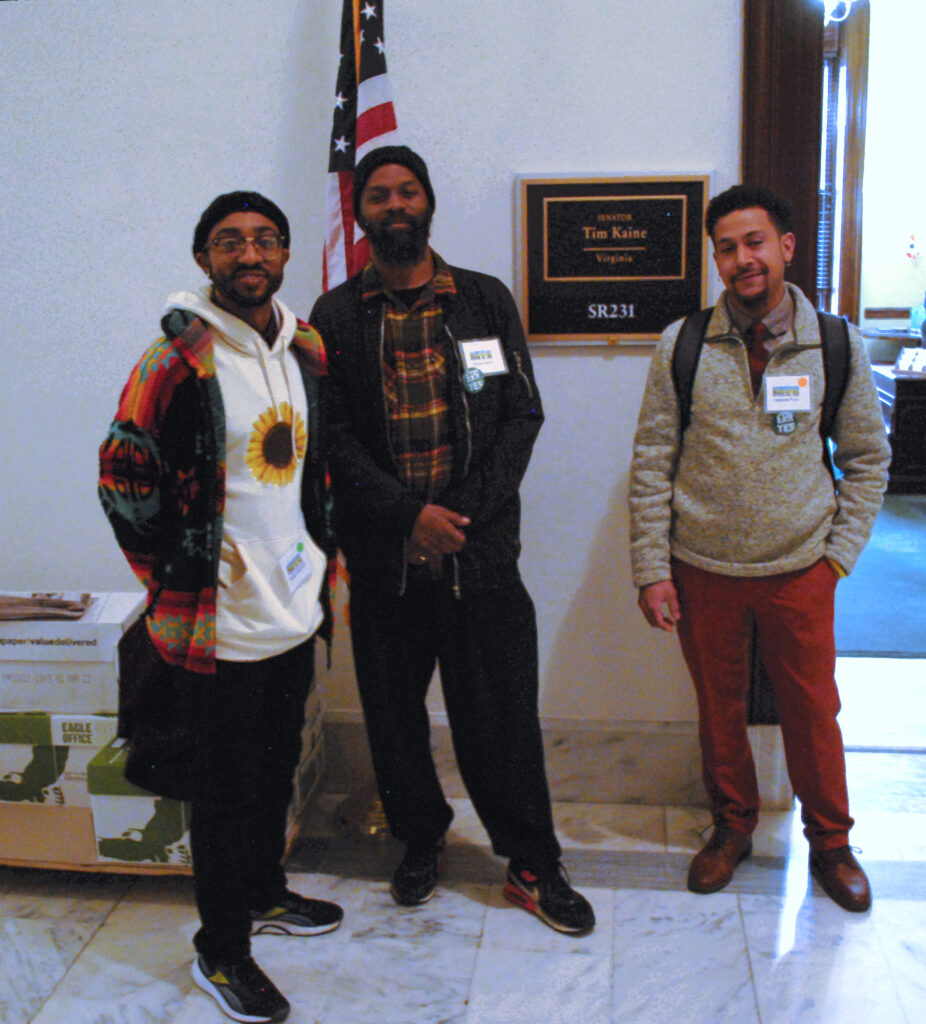
It’s difficult to overstate the importance of the Farm Bill in shaping U.S. agriculture. Agricultural policy can determine who has access to critical resources, often leading to the exclusion of marginalized groups who lack access to institutional power. Progressive policies that have historically benefited predominantly white farmers have also served as mechanisms to displace farmers of color, and Black farmers in particular.
Black farmers have historically been refused access to credit and land grants that the United States Department of Agriculture and Farm Service Agency used to support farmers. This lack of access has made it extremely difficult for Black farmers to compete as agriculture became increasingly capital intensive. The number of Black farmers decreased from close to one million in 1920 to under 45,000 in 1970. Today, Black farmers own less than 2 percent of the nation’s farmland.
For Duron Chavis, who operates a five-acre farm on land in the center of Richmond, Virginia, and acts as president of the Central Virginia Agrarian Commons board, the Farm Bill presents a critical opportunity to address this history through direct support for Black farmers.

“It’s not a foreign concept of the federal government helping farmers get land—and we know that the federal government did that to the exclusion of black and Brown folks. We’re saying, ‘what if there were a way for grant funding to be reparative, and try to get land into Black and Brown hands?”
A long-time advocate of community land trusts, Chavis pointed out that creating federal funding for models like the Agrarian Commons, which permanently removes land from the marketplace and places it in control of communities, could be an effective way for the federal government to make land more accessible for Black farmers, and farmers of color who been historically excluded from stable land access. Cam Terry, who started his first farm business, Garden Variety Harvests, in his neighbors’ backyards before securing a 99-year lease from the Southwest Virginia Agrarian Commons, agreed.
“I think we should stop asking people who want to grow food for their communities to be so darn creative,” said Terry. “If a beginning farmer raises their hand and says they want to grow food for their community, farming is already hard work, and we should not make the bar any higher for them. You should have access to land, if that’s what you want.”
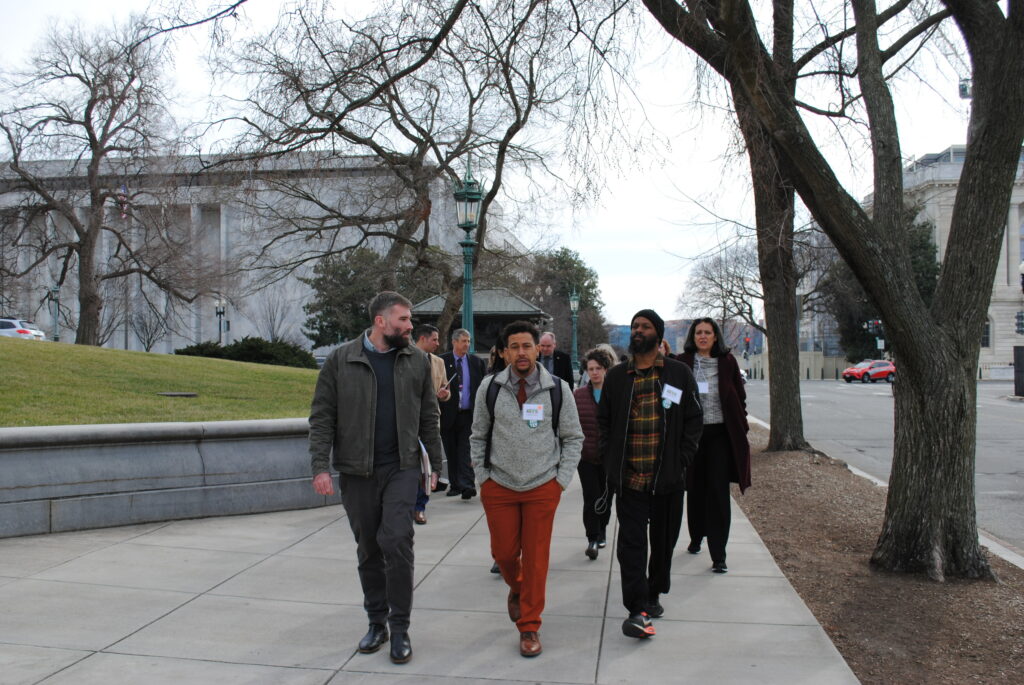
Creating a funding stream through the Farm Bill could radically upgrade the ability of the Agrarian Commons to transfer part of the 400 million acres of land changing hands into community ownership, with an emphasis on Black farmers and other farmers of color. Policy makers don’t have to start from scratch when working to expand land access—Agrarian Trust has already proven highly successful at acquiring, and defending land for farmers. Policy that supported community land ownership would greatly expand Agrarian Trust’s ability to grow the Agrarian Commons, while ensuring the next generation of farmers will have stable access to land.
On our first day in DC, the Agrarian Commons farmers gathered alongside their fellow NFFC members in the Methodist Building, a non-government building with a long history of hosting social justice organizing. It was here, just over 60 years ago, that Dr. Martin Luther King and civil rights leaders organized the 1963 March on Washington. Our hosts from the NFFC welcomed us and offered a few choice words of wisdom: focus on the issues most important to us, tell stories that grab the staffers’ attention, and—perhaps most importantly—wear comfortable shoes.
Chavis pointed out that creating federal funding for models like the Agrarian Commons, which permanently removes land from the marketplace and places it in control of communities, could be an effective way for the federal government to make land more accessible for Black farmers, and farmers of color who been historically excluded from stable land access.
Terry and Chavis joined the team that would focus on lobbying for land access, while Tyrone Cherry joined the team which would advocate for credit access. The land crew was also joined by Edna Rodriguez, the executive director of Rural Advancement Foundation International USA; Stephanie Enloe, program manager for Women Food and Agriculture Network; Carl Wassilie, a Yup’ik salmon fisherman and lifelong activist; and Helia Bidad, a legal fellow at the Land Loss Prevention Project.
The next day, I followed the land team as they climbed the steps of the Cannon Building, and plunged headfirst into the world of lobbying.
Things move very quickly in lobbying. After a staffer invited us into the office, our time was limited to 30 minutes, making it critical to focus on specific policy points. Some staffers were more attentive than others, with their responses ranging from polite, but distant nodding, to enthusiastic appreciation for the stories we had to share. Our first meeting of the day, with the office of Kim Schreier, a House Democrat from Washington state, was a success.
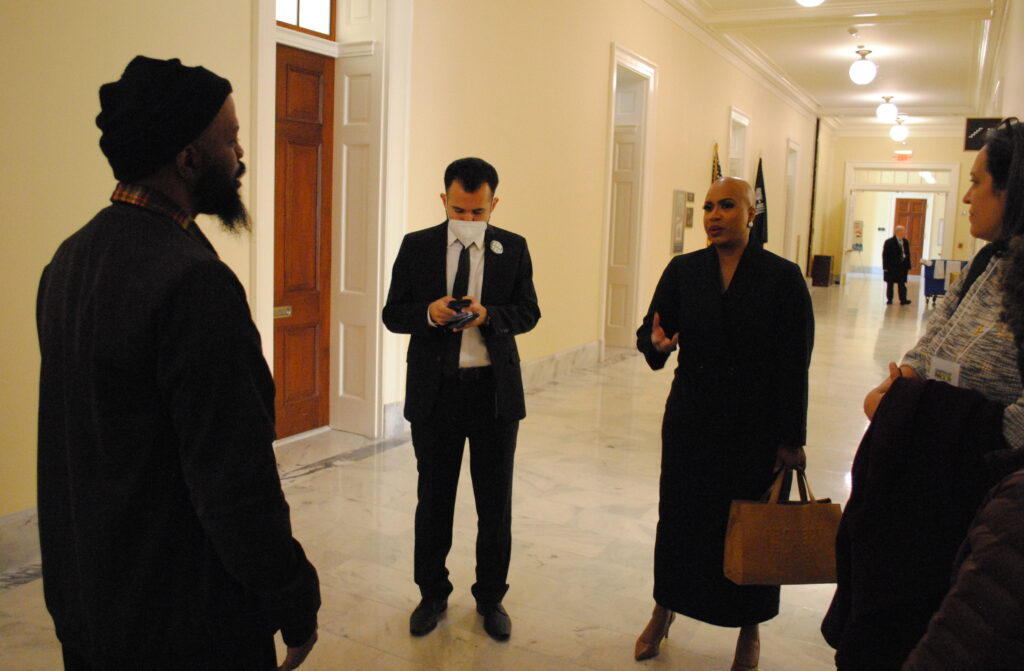
“I believe community land ownership, specifically for farms, works because it means that farmers aren’t saddled with the debt, but they still get to have the security of remaining on the land as long as they would like to, and their business remains viable,” Terry explained to the staffer, who was meeting with us in place of Representative Schreier.
Terry’s message, and the message of the rest of the Land Access crew, went over well. Like most of the staffers we met with, Schreier’s staffer thanked us, and explained how Representative Schreier’s platform largely aligned with the NFFC’s requests. He asked for any pre-existing language, either in our own policy work or in pre-existing bills, that he could draw on in creating Schreier’s Farm Bill platform.
Most of our meetings followed this format. Sometimes, we had to be adaptable. Our visit coincided with the State of the Union address, meaning that many of the offices of the Congress members were full. We met with staffers in lobbies and in hallways, doing our best to still make a lasting impression. Some staffers were eager to hear more from us and to amplify our stories to the rest of Congress.
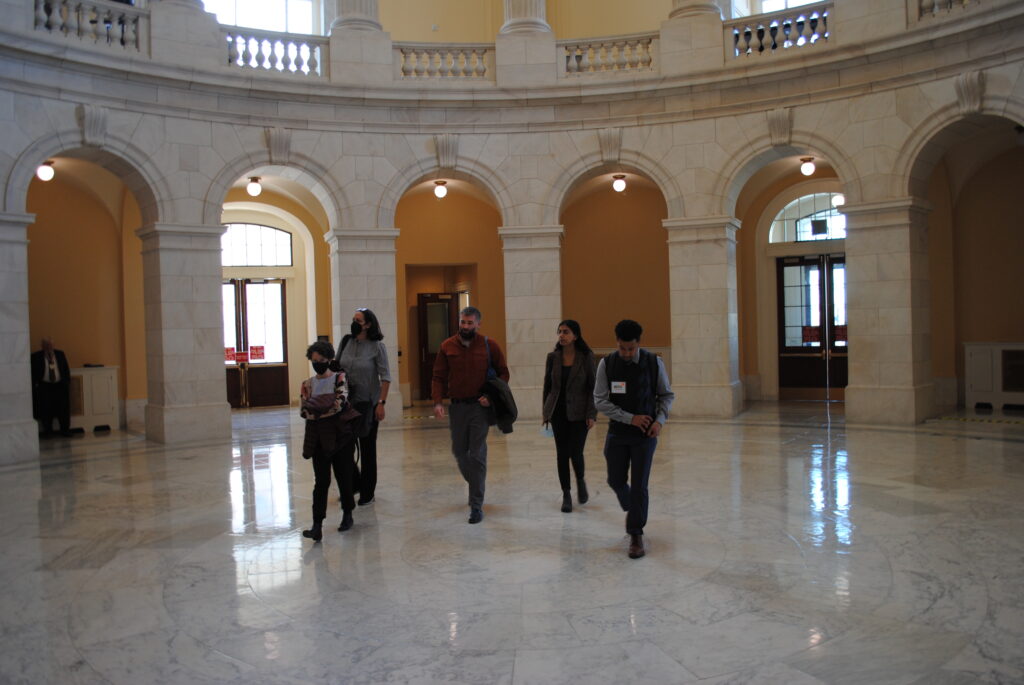
The staffer from Senator Jim McGovern of Massachusetts, who we met with last, was especially impressed by our message. We were asking for a champion to support our progressive platform. McGovern, it appeared, was looking for a platform to support. In 2017, farmland in Massachusetts was the fourth most expensive in the country, at $10,800 per acre. While the state is home to a thriving scene of small, organic farms, these high costs prevent new farmers from accessing land. The staffer asked us for bill language and then offered to host a hearing on land access, which would be a huge opportunity for NFFC to get its members’ message out to Congress.
Community land ownership was also on the minds of our fellow land access team members. Jordan Treacle, the policy lead at NFFC, hinted at a bill expanding federal funding for farm trusts that the organization was drafting in collaboration with National Young Farmers Coalition, and expressed interest in the Agrarian Commons.
“Projects like Agrarian Trust have shown that [the community land ownership] model is viable, it’s successful, it’s inspiring, and it’s practical for a lot of young farmers who want to get into farming, but get priced out of buying land on their own,” said Treacle. “In engaging with Congress, we’re trying to deliver the message that using public policy and public funds to help community land ownership should be a mandate for Congress and help bring a new generation of farmers into our food system.”
By the end of our visit, we had found our rhythm. Each member of the group wove their specific requests into our shared mission of increasing land access for farmers. In addition to community land ownership, we discussed heirs’ property, a form of property law the USDA has described as “the leading cause of land loss among Black farmers”, and the importance of creating federal support for farmers—ideally in the form of grants—to help them maintain long term control of their heirs property land. Terry and Chavis also stressed the importance of the Justice for Black Farmers Act, a bill introduced by Senator Cory Booker that aims to address the historical discrimination in federal agricultural policy.
Projects like Agrarian Trust have shown that [the community land ownership] model is viable, it’s successful, it’s inspiring, and it’s practical for a lot of young farmers who want to get into farming, but get priced out of buying land on their own,” said Treacle.
“I feel like pushing for the Justice for Black Farmers Act is good, because it’s a bill that has a lot of buzz in the public media. It’s something that the staffers can look at, besides our policy points, and hopefully to help push forward, or at least take pieces of that and turn it into the Farm Bill,” said Chavis.
It’s hard to say how our visit to Washington will impact the Farm Bill. It was evident, however, that many of the staffers we met were hearing about community land-ownership models like the Agrarian Commons for the first time. They were excited about the prospect of pre-existing channels where they could distribute federal funding and create an immediate impact, without having to build something from scratch. If there’s one takeaway from the Agrarian Trust’s visit to Washington, it’s that Congress may begin to see community land ownership and the Agrarian Commons, as one of these channels.
In the meantime, Agrarian Trust will continue its vital work making land accessible to farmers, with a special emphasis on marginalized communities who have historically been excluded from land access. Our trip to DC shows that the Agrarian Commons is already gaining national recognition, showing policy makers, nonprofit leaders, and farmers alike, the immense potential of community control of the land.


